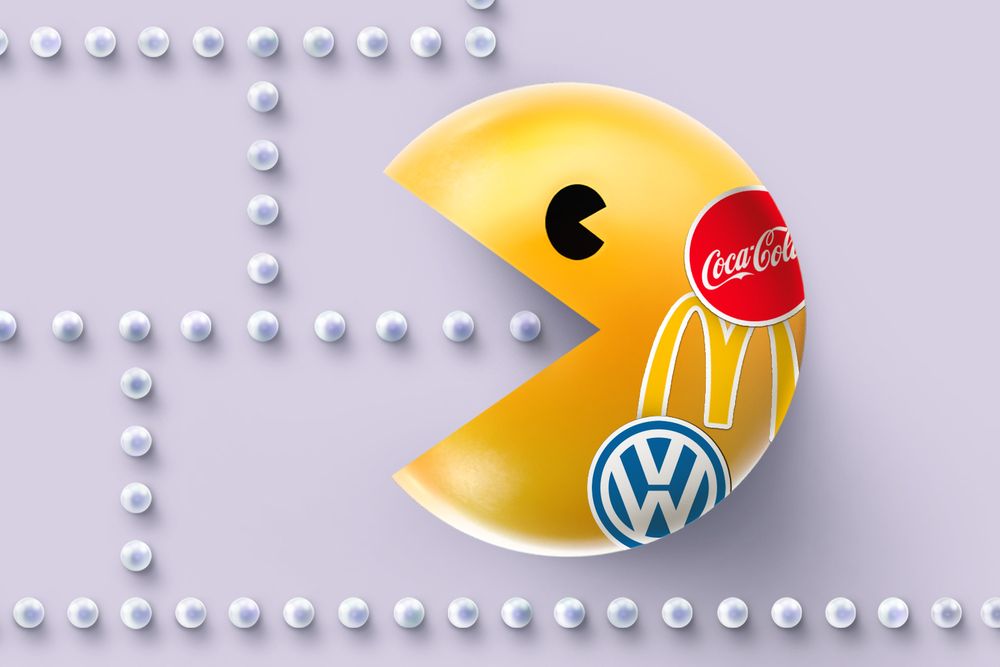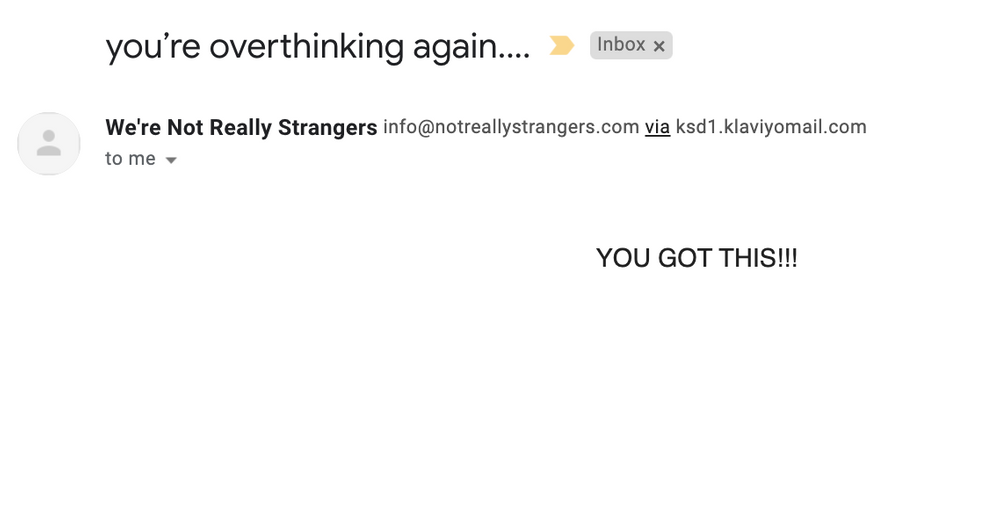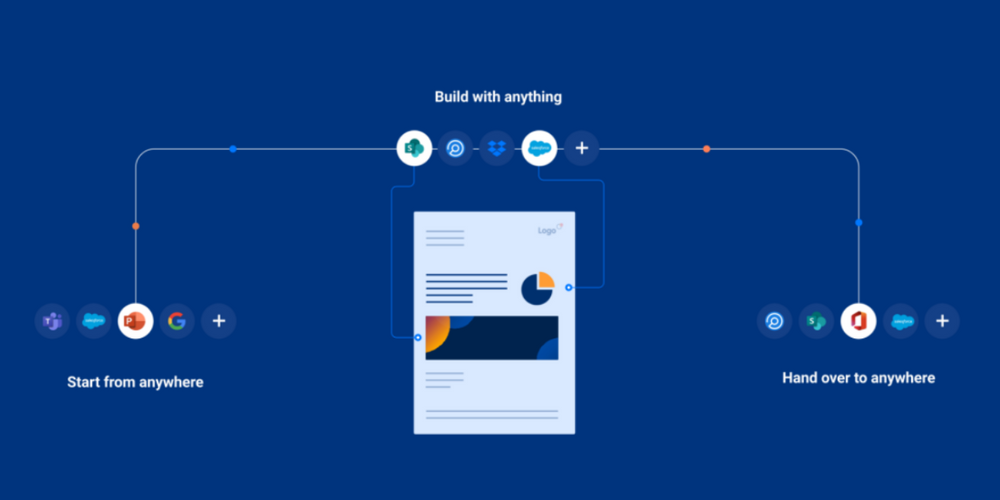|
Good Wednesday afternoon. We (or maybe Avril Lavigne) wrote a song for you. It goes like this: “Hey hey, you you, did you take our survey?”
If your answer was “No way no way,” then...please fill out our audience survey so we can get to know more important things about you, like whether you’re into pop punk songs from 2007.
Last chance to have your feedback heard (in survey form, at least) via the link above.
In today’s edition:
- In-game advertising
- An email marketing Q&A
- Hot takes on trade publications
— Phoebe Bain and Ryan Barwick
|
|

Francis Scialabba
|
As the pandemic forced brands to pull ad spend across all types of media, one area actually saw gains: video games. Because if you can’t advertise inside an actual soccer stadium, why not in a digital one?
Bidstack, a UK advertising platform whose inventory is found exclusively within video games, benefited.
“When the UK went into lockdown, our user base increased by 300% immediately. Everyone’s playing games,” Francesco Petruzzelli, chief technology officer at Bidstack, told Marketing Brew.
Pac-Man, but with billboards
While product placement in video games isn’t new (hello, Pepsi Invaders), Bidstack and other niche programmatic advertisers are taking a more targeted approach.
What it’s selling:
-
Billboards you’d pass in a racing game or within a soccer stadium, just like OOH inventory you’d pass in the real world.
- Or skins—custom overlays like a branded rifle or stickers on a car.
Bidstack counts Coca-Cola, McDonald’s, and Unilever as clients, placing their ads within games like Ubisoft’s Hyper Scape, Sega’s Football Manager, and other, mostly mobile, games.
Currently, brands negotiate individually with Bidstack for inventory in $10,000 increments, selling across verticals, like interests in driving games or real-time soccer. CPMs range from $3 to $15, depending on the game and the audience targeted.
“You can target a gamer who’s been playing between 5pm and 10pm, who’s losing a lot, and be like, ‘Here’s a Domino’s advertisement; you’re rubbish,’” Petruzzelli joked.
- Last year, Bidstack ran 40+ in-game campaigns and saw revenue rise from $192,500 to $2.4 million. More than 20 games have signed on for 2021.
Unplugged
There are obvious limitations. One: Not every game makes sense. You don’t want to see a Burger King billboard in the trenches of the Death Star, or a Coke bottle on the beaches of Normandy.
Two: According to Andrew Moore, a media strategist at Horizon Next, “The main problem is the lack of available performance data.” It would take “proven attribution that we can measure, like someone saw that and they made a visit to the site and made a purchase,” for more brands to take it seriously, Moore said.
More complicated than a billboard: There are also fans who might not want a brand invading their own personal time. “I’ve seen reddit slaughter people; we take massive care to make sure that we’re not on one of those reddit forums,” Petruzzelli said. — RB
You can read the full version of this story here.
|
|

Photo by Phoebe Bain
|
You might know We’re Not Really Strangers (a purpose-driven card game for deepening relationships) from its infamous Instagram account. It’s colorful and extravagant, with more than 3.7 million highly engaged followers.
So it might surprise you that the email above came from the same brand.
- We’re Not Really Strangers emails contain one enticing subject line, followed by a few words of plain text.
- It’s the unplugged version of email marketing, with messages that are a far cry from typical brand emails—often loud graphics overtly showcasing products.
Marketing Brew hopped on a video call with the brand’s VP of Digital + E-Commerce, Jessica Potts, to understand the stripped down email marketing strategy better. Here’s Potts...
On frequency: “If the vibe feels right and we have something to say, it's like, ‘Hey, there can be four emails this week,’ or sometimes there might be two—it just really depends.”
On decisions: “The data makes sense and it helps you make a decision. And sometimes it's like, ‘But my gut is telling me something else and I really think we should go for it.’ And that's where the magic starts to happen. It’s in letting both those worlds be married to each other.”
On testing creative ideas: “You can't just go willy-nilly, because you're testing on your current community. There have been plenty of times where I've thrown out ideas and they're not all winners.” — PB
Click here for our full Q&A with Jessica Potts.
|
|

|
So many people, so many ads. How do you get the best, most relevant ad to each one? Well, we have a few artfully arranged letters for you: Ad-Lib.io.
Their enterprise platform makes it easier for global advertisers to produce and optimize relevant advertising across digital channels at scale. Which means your ads get out there when you need them, are relevant to the people who see them, and look as cool as you dreamed they could be.
What else does Ad-Lib.io do? TYSM for asking. They:
- Help internal marketing teams and/or external agencies collaborate
- Save you the hassle of tagging and coding every single ad, with one-button automation
- Integrate multiple platforms (like Google, Instagram, and DV360) to create a secure place for all of your ad formats.
These days, ads have to be personalized, data-derivable, and scalable. And that means these days you need the top-of-the-line tech services of Ad-Lib.io.
|
|

Francis Scialabba
|
Two stories about the social media marketing landscape’s future swirled this week, inciting criticism about internal research and the “self-fulfilling prophecies” they create.
-
Marketing Dive reported “nearly half of execs expect social marketing budgets to double in next 3 years, study finds.” The research was conducted on behalf of Sprout Social, a social media SaaS firm that could benefit from skyrocketing social media marketing budgets.
-
MediaPost published a similar piece titled “IPG/Verizon Study Finds Interactive Ads Perform Better, Especially When People Interact with Them.” Enough said.
What’s wrong with that? Dr. Augustine Fou, an independent cybersecurity and ad fraud researcher, calls these reports “self-fulfilling prophecies.”
- “Marketers who read them will say, ‘Oh, well, other marketers think they're going to spend more, so it's probably okay for me to spend more.’ So then they end up spending more, and not because there was any legitimate reason to,” Dr. Fou told Marketing Brew.
- “Have you seen those Netflix documentaries where the sugar industry pays research scientists to blame everything on fat? We're seeing the exact same thing happening in the ad-tech industry. It's not just one article or two. It's literally entire publications set up to support industry narratives,” he continued.
Looking ahead: What’s your take on media running these types of studies? Hit reply with any and all hot takes. — PB
|
|
-
GumGum, a contextual ad-tech company, raised $75 million from Goldman Sachs. GumGum scans computer images and text to place ads based on content, rather than the more scrutinized targeted approach.
-
Procter & Gamble signed a deal with Major League Soccer to reach its younger, more diverse fanbase. P&G already has deals in place with the NFL and the Olympics.
-
IHOP ran a stream of sizzling, frying bacon on Clubhouse in a campaign for its new, thicker bacon. Can you get high cholesterol from Clubhouse? We’ll find out.
-
Pacifico is running a national campaign to follow up a year of strong sales targeted at Gen Z. It’s not really summer if cheap(er) beer brands aren't advertising to barely legal drinkers.
|
|

|
Disconnected, unregulated, and hard-to-find content is the enemy, and Templafy is the superhero content enablement platform that allows your business to centrally govern content and track performance, helping your team to create on-brand, high performing business documents faster directly within your workflows. A seamless future of work relies on content connected by Templafy.
|
|

Francis Scialabba
|
There are a lot of bad marketing tips out there. These aren't those.
Hiring: You’ve got the budget, now you’ve got to find the talent. Here are the seven most important questions to ask when hiring a content marketing agency.
Networking: LinkedIn just dropped new guides for marketers, from video ads to spotlight ads and sponsored messages.
Infographic: We love content marketing today, apparently. Here are 20 stats every marketer should know about content marketing—and more importantly, where to invest in content marketing.
There’s data for that: For dining? Yep. Entertainment? Mm-hmm. Shopping?! Most definitely. Morning Consult tracks how consumer attitudes shift in real time across a range of categories—helping you talk to your target audience in the right way.*
*This is sponsored advertising content
|
|
|
For everyone who’s been asking us to add a job board to Marketing Brew, we have exactly one (1) job posting for you. It’s for a Growth Marketing Manager, B2C at...drumroll please  ...Morning Brew. ...Morning Brew.
See the full job description here. All Marketing Brew readers are encouraged to apply. For whatever reason, the JD doesn’t mention the number one perk of the role—that you’d get Ryan and me as coworkers—but we’ll let it slide. — PB
|
|
|
When you share the Brew with your network, you earn free swag like our classic Morning Brew t-shirt.
Are you one of those people who is always going places? Then you probably need a shirt. Might as well be this bad boy with the Morning Brew logo plastered across the chest.

Hit the button below to learn more and access your rewards hub.
Click to ShareOr copy & paste your referral link to others:
morningbrew.com/marketing/r/?kid=303a04a9
|
|
|
Catch up on a few Marketing Brew stories you might have missed.
|
|
|
Written by
Phoebe Bain and Ryan Barwick
Was this email forwarded to you? Sign up here.
|
ADVERTISE // CAREERS // SHOP
Update your email preferences or unsubscribe here.
View our privacy policy here.
Copyright © 2021 Morning Brew. All rights reserved.
22 W 19th St, 8th Floor, New York, NY 10011
|
|










